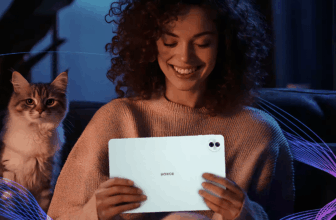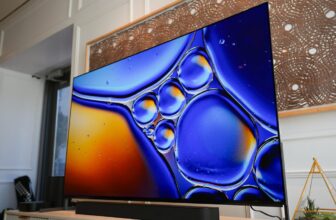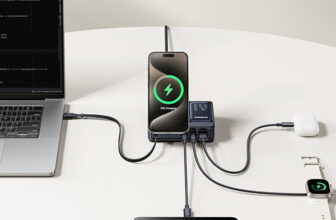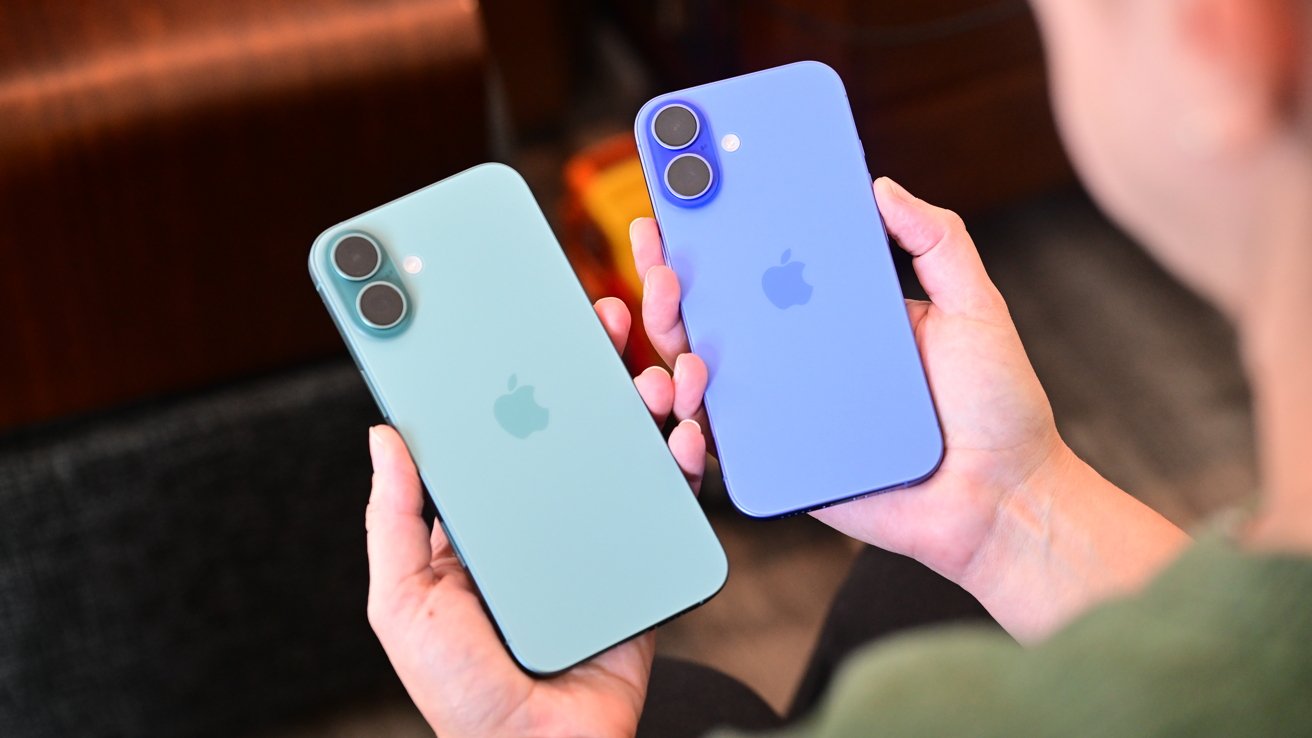
The 2024 iPhone 16 and iPhone 16 Plus bring plenty of upgrades and a promise of more to come, and strongly make the case that it’s okay not to go for the pro models.
You can tell it’s a different kind of year when the non-pro phones are more interesting than the pro ones.
There are just far more changes found in the iPhone 16 and iPhone 16 Plus when you’re looking year-over-year. Even more when you consider most upgraders will be coming from an older device than an iPhone 15.
Here, we’ll be looking at Apple’s two entry-level 2024 iPhones — the iPhone 16 and the iPhone 16 Plus. They have new colors, new buttons, and eventually, some new AI enhancements.
For most of the review, we’ll be talking about the smaller iPhone 16, though everything will apply to the iPhone 16 Plus as well. Other than screen size and battery life, there’s no difference between the pair.
iPhone 16 review: Design and size
Both phones come in aquamarine, teal, pink, white, and black. They’re aluminum frames with matte color-infused glass backs.
Unlike with past years, this time around the phones feel vibrant and fun. They’re more saturated and we also have true white and deep black.
The bodies have basically the same physical dimensions as the 2023 models, though eagle-eyed users will notice more subtle antenna bands. The weight has also dropped a hair.
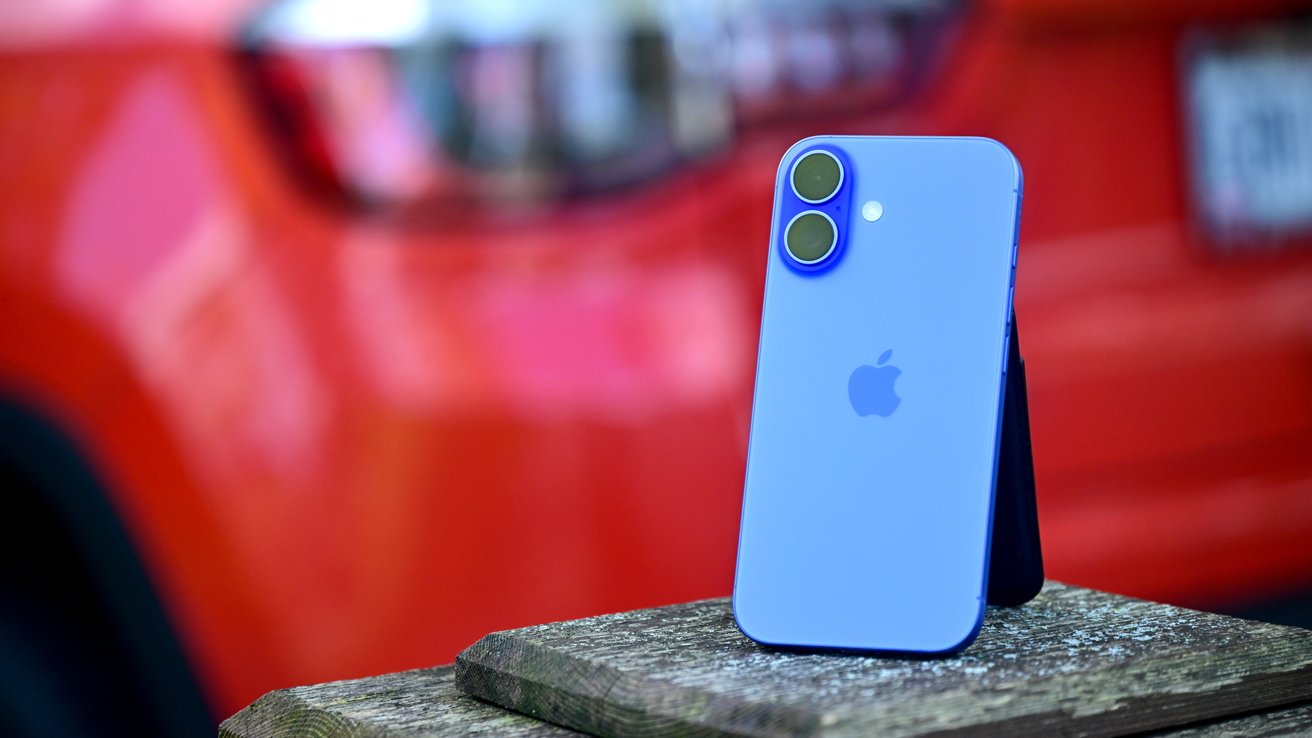
iPhone 16 & iPhone 16 Plus review: The new colors really pop this year
The iPhone 16 decreased from 6.02 ounces to 6 ounces and the iPhone 16 Plus went 7.09 to 7.03 ounces. It’s not enough to feel when holding them though.
Cameras were realigned too, matching the old iPhone X aesthetic. They’re stacked, which does have some photography-centric benefits we’ll get into in a bit.
Basically, if you want a summary — they look like iPhones. There are changes, but they’re clearly still out of Cupertino’s design labs.
The Action button that first debuted with the iPhone 15 Pro and iPhone 15 Pro Max has moved to the entry-level phones to replace the mute toggle. And, we have the new Camera Control button replacing the mmWave antenna on the lower-right side.
The iPhone 16 has a 6.1-inch Super Retina XDR OLED display while the iPhone 16 Plus maintains its 6.7-inch one. They boast the same brightness as before, but now have a low one nit minimum.
This seems like a minuscule, meaningless detail but it was rather convenient. As we were working on this review late into the night, it was very apparent that the new display could dim further.
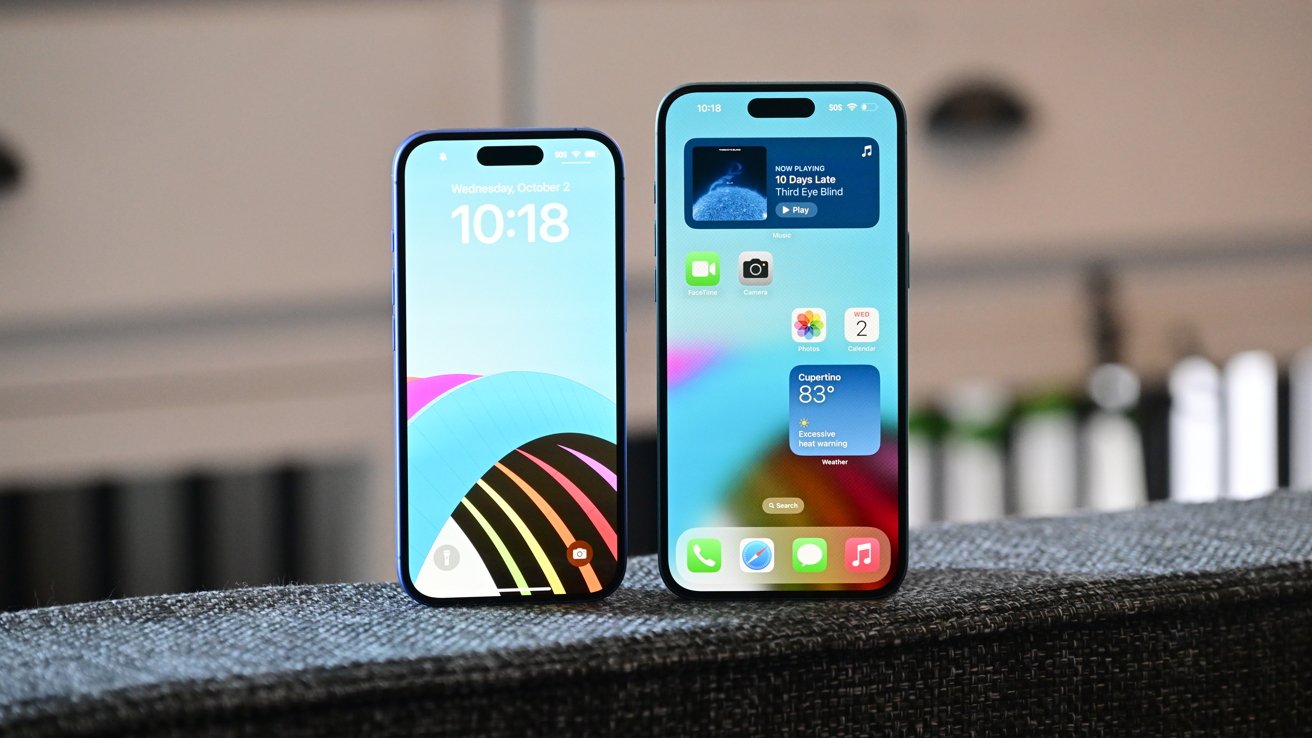
iPhone 16 & iPhone 16 Plus review: The new phones come in 6.1 and 6.7-inch sizes again
Any time you want to use your phone in a dark environment — putting a toddler to bed, a quick text during a movie, or reading in bed at night — the ability to dim further helps. The screen is better to read, puts out less light, and is easier on the eyes.
The iPhone 16 display resolution remains at 2556-by-1179 and the iPhone 16 Plus clocks in at 2796-by-1290. Both calculate to an identical 460 PPI.
Neither phone supports the always-on ability nor do they have 120Hz ProMotion. Both are features reserved for the Pro lineup.
It’s our steadfast option that your average user doesn’t care much if at all about ProMotion refresh rates. The always-on battery-sipping appears to be more of a complaint, but even calls for that aren’t so loud.
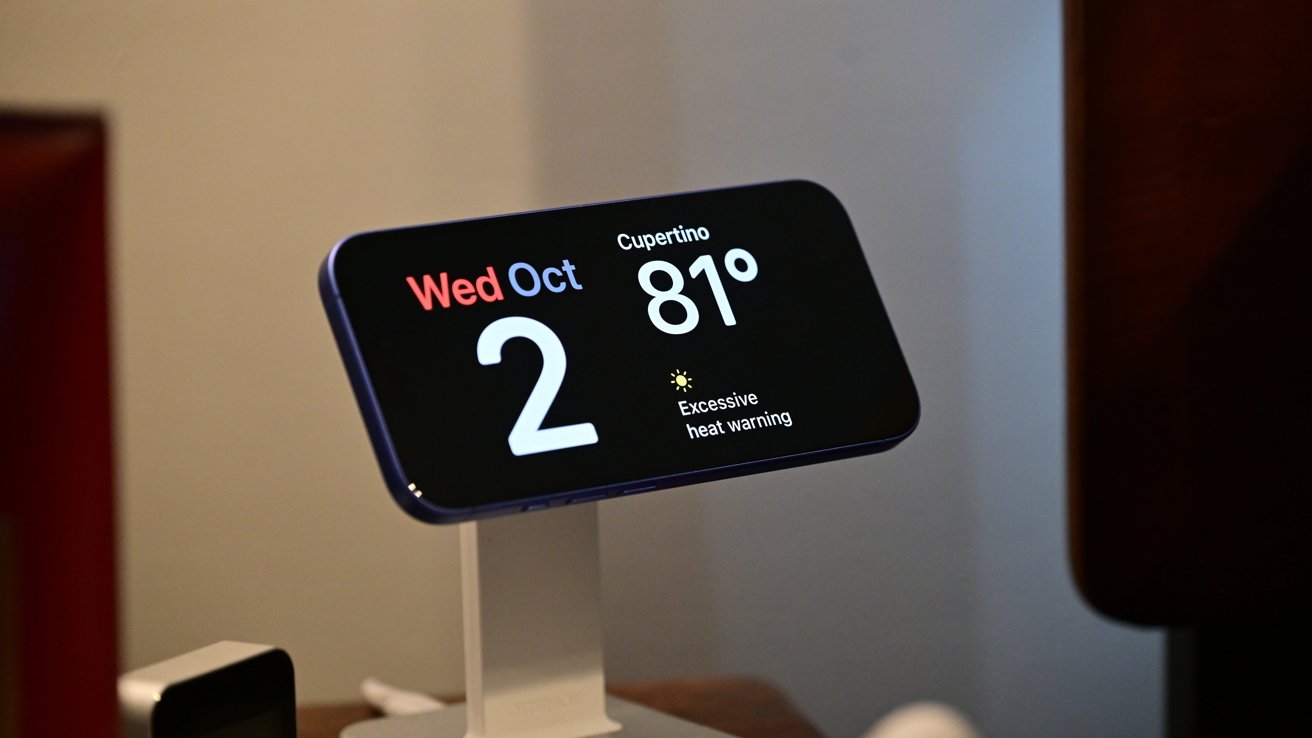
iPhone 16 & iPhone 16 Plus review: StandBy mode only works a few moments before you have to wake the display up again
Always-on is extra beneficial when using StandBy mode. Currently, the iPhone 16 just turns off after a few moments while the pro phones and their always-on displays can stay active much longer.
iPhone 16 review: Action Button
The Action Button isn’t completely new here but in the last year our opinion has solidified a bit more. There will be some that won’t acknowledge this button at all, allowing it to just replicate the mute toggle.
There’s no wrong way to use this button. Apple gives several stock options like opening the Camera app, toggling mute, starting a voice memo, and more.
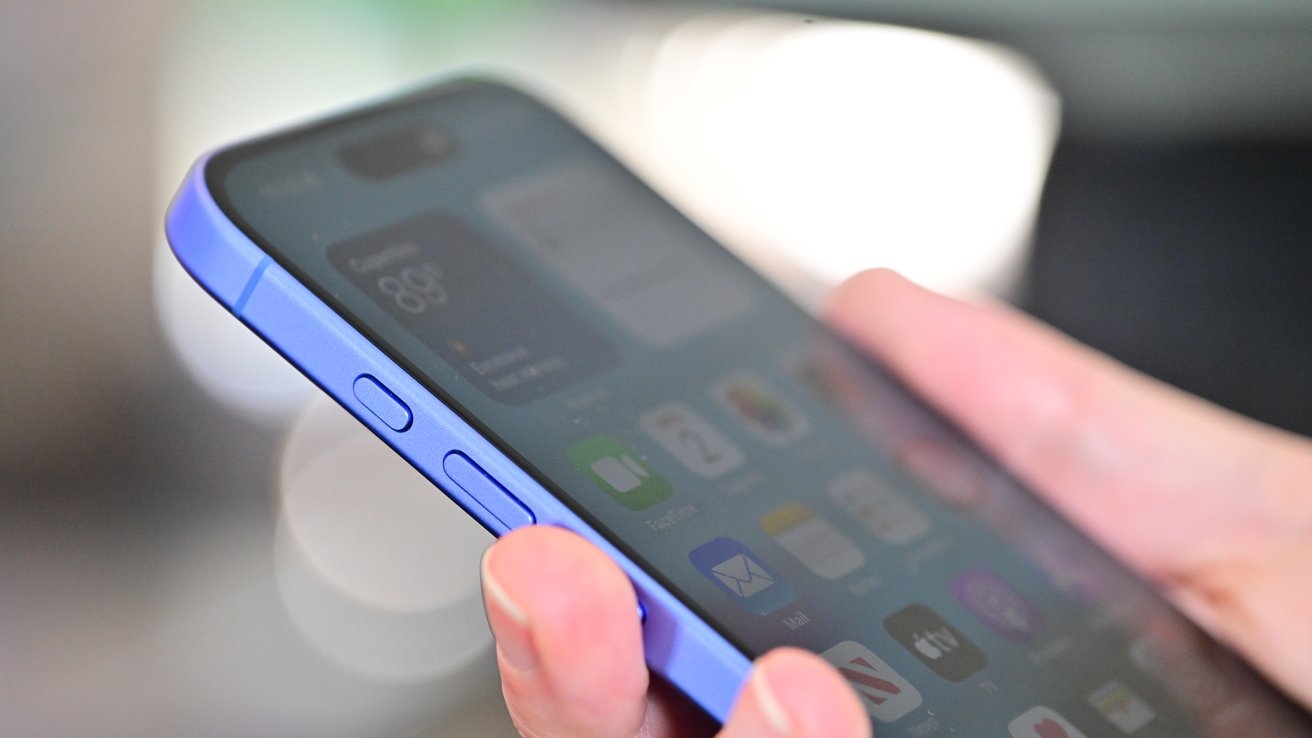
iPhone 16 & iPhone 16 Plus review: The Action button comes to the entry-level models
We’ve found the most useful is to open a folder of Shortcuts. We have automations to do everything from setting smart home scenes, to running the vacuum cleaner, to launching our most-used apps, to adding a border to our screenshots.
Apple has turned a corner recently, allowing a vast array of customization on phones and this extends to the Action button in the same way it comes to the app icons colors or which camera app you prefer to use.
Try a few things out with the Action button before you finally settle on what works best for you.
iPhone 16 review: Cameras
Technically speaking, the iPhone 16 main camera sensor has remained the same versus the iPhone 15. It’s still a 1/1.56 sensor with 1.0 micrometer pixels that’s 48MP.
Apple now calls it a “Fusion Camera” though, referencing the changes to the photo processing pipeline in offering optical-quality 2X zoom and the new Photographic Styles. Essentially though, it’s the same sensor.
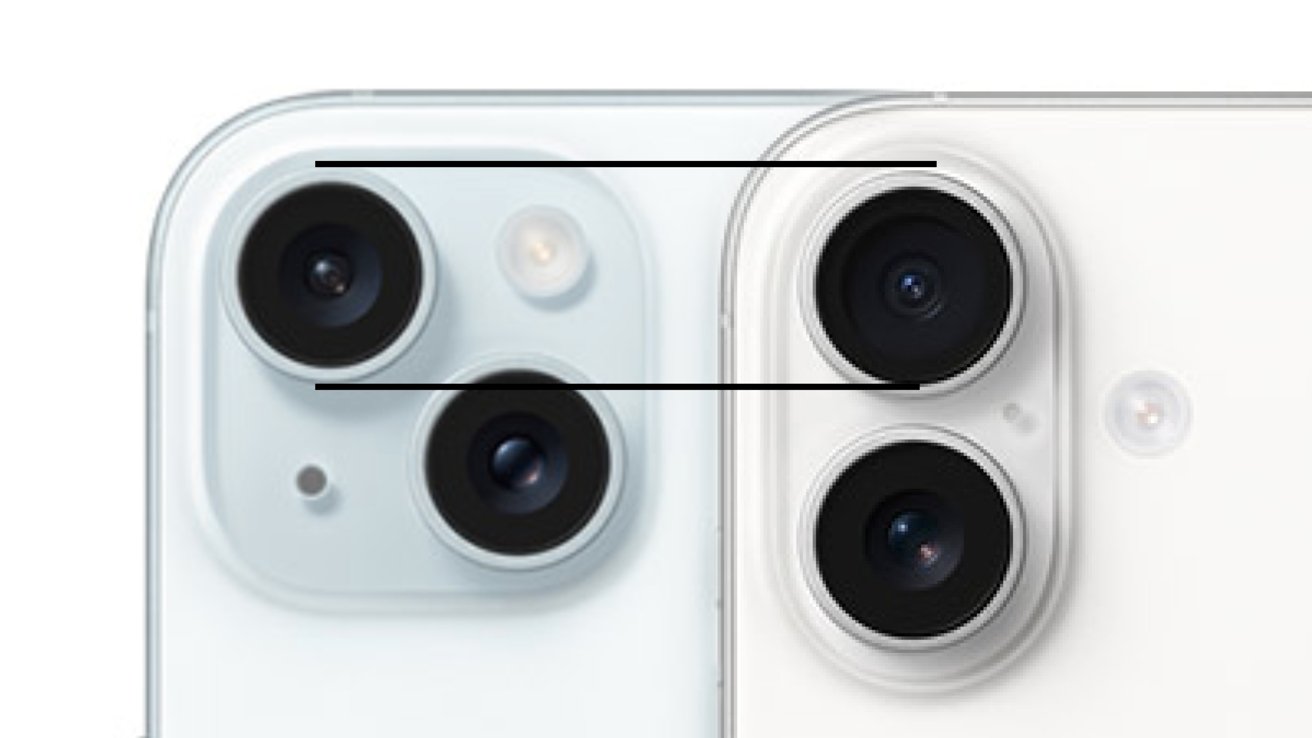
iPhone 16 & iPhone 16 Plus review: The new cameras are larger, but have the same sensors
Physically though, the camera lenses are notably larger. It isn’t clear though why they expanded if the sensors aren’t larger.
One plausible explanation is cost savings. The new lenses are the same physical size as the iPhone 16 Pro.
It’s conceivable Apple opted to produce one set of lenses that works on both sets of phones rather than two. It’s a mystery.
Since the cameras have been rearranged, it does unlock a new ability. Both iPhone 16 and iPhone 16 Plus can capture Spatial Photos and Spatial Videos for the first time.
These can then be viewed on Apple Vision Pro. These photos are even more impressive than the converted ones you can create in visionOS 2.

iPhone 16 & iPhone 16 Plus review: We want this spider to be our new pet
Finally, the new iPhones can finally capture macro photos. The ultra wide didn’t get the same resolution bump the pros did, but at least it can now focus on those closeup objects.
Compared to the pros, the biggest omission is a proper telephoto lens. Judging by how infrequently we personally used the telephoto lens on our iPhone 15 Pro, this still isn’t an issue for the majority of users.
The 2X optical-quality images from virtually cropping in the 48MP sensor is sufficient for most situations. You also get up to 10X digital zoom which does have some artificial sharpening done, but is fairly usable with enough light.
Photographic Styles were leveled up this year, in a big way. They’re powerful enough to seem like a pro-only feature but they aren’t.
They now have a dedicated button in the top-right corner of the camera app that looks like a grid that opens the new interface. It’s a two-directional plane where you can adjust the tone and the color independently.

iPhone 16 & iPhone 16 Plus review: See how the Photographic Styles can adjust a photo
Photographic styles, unlike filters, are more intelligently applied. A filter just adjust the image as a whole while Photographic Styles change how the camera captures individual details, like shadows or highlights.
Besides the new interface, you can now adjust these styles after taking the photo instead of solely at the time of capture. Apple is doing this with its new photo pipeline that also captures additional photo details to adjust after.
We’ve skipped Photographic Styles at times because they did require you to set them when taking the photo. In the moment, you didn’t always have time for that.
Now that they can be changed after, we’ve very much started using and customizing them more. They can dramatically alter the feeling of a photo.
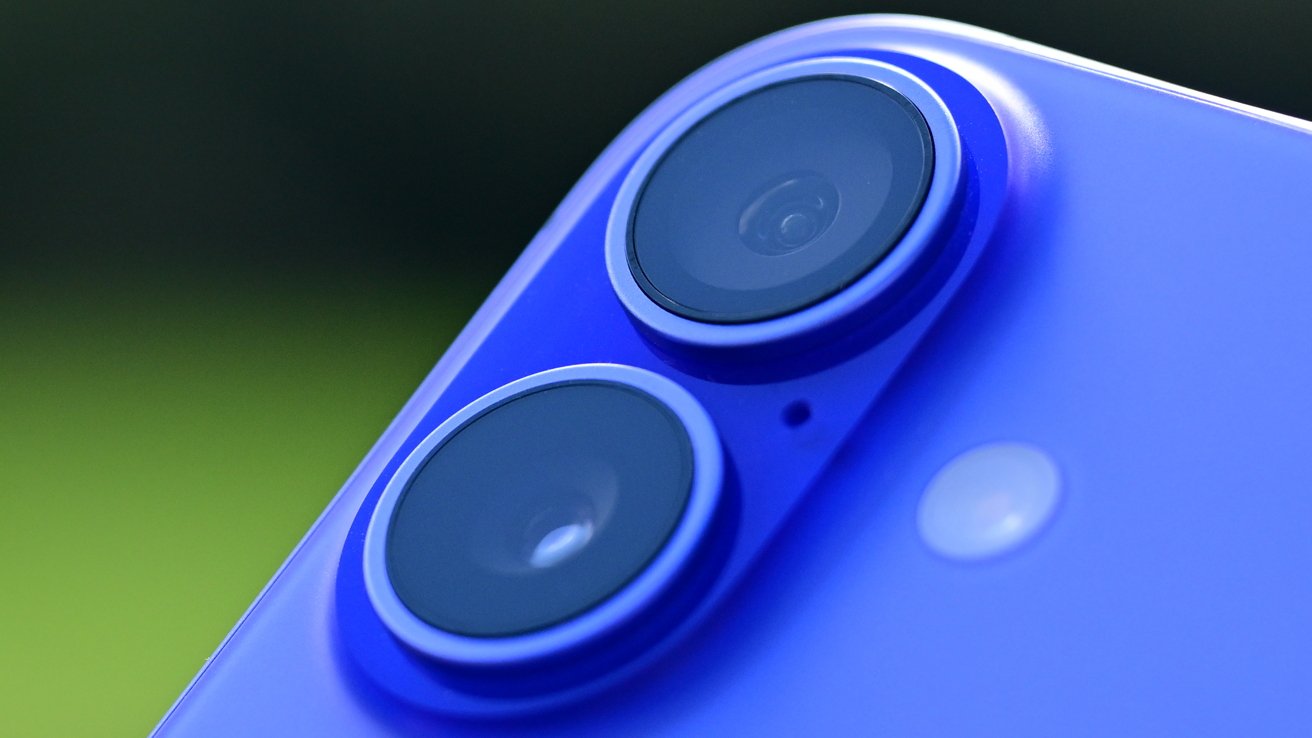
iPhone 16 & iPhone 16 Plus review: The new 12MP ultra wide camera and 48MP wide camera
On the video front, QuickTake now captures at 4K, up from 1080p. To take a QuickTake video, you just hold the shutter button — or now the Camera Control button.
It is way faster than switching to the video mode but the lower quality was always an issue. It seemed inexplicable to us that the phones were capable of 4K but holding the button oddly limited it so extensively.
We’re very happy Apple solved that this time around.
Then we have audio. The new phones are better at wind noise reduction, cutting out distracting rustling like we see on Apple Watch and AirPods now.
Our favorite feature though is the Spatial Audio and the audio mix. Audio isn’t just recorded in left and right stereo, but in a kind of 3D.
After recording, you can choose multiple mixes for that audio based on your needs.

iPhone 16 & iPhone 16 Plus review: Adjust the audio mix on iPhone 16
You could emphasize the people just in the frame, cut out all background sound like it was recorded in a studio, or go with cinematic to put the people’s voices on the center channel and the ambient sounds all around them.
They’re surprisingly effective and we’ve been nerding out on them. This is such an easy way for mobile creators to improve their audio quality in different ways.
The rub is that right now, Final Cut Pro doesn’t yet support these audio mixes. So if you are pulling video into a project, you’ll have to adjust it on your phone first, then move it to Final Cut.
We’re sure the workflow will improve. Early adopters are going to be jumping through some hoops for a bit.
Sensor and software upgrades aside, the big change here is that new Camera Control button.

iPhone 16 & iPhone 16 Plus review: The new Camera Control button has people split
It’s certainly got folks divided on its utility, including here at AppleInsider. Some adore it, some question why it exists at all, and one holdout here finds it more tedious that using the screen.
Personally, this reviewer finds it a welcome addition though not always the most useful. It depends on the situation, which is a problem in and of itself.
Part of it is how you hold your phone. If you hold your phone without a finger near the Camera Control button, it’s not that useful to launch the camera.
Then when you’re using it, something like zoom is fiddly if you want to zoom in a lot. You end up swiping just an inch at a time to get all the way in.
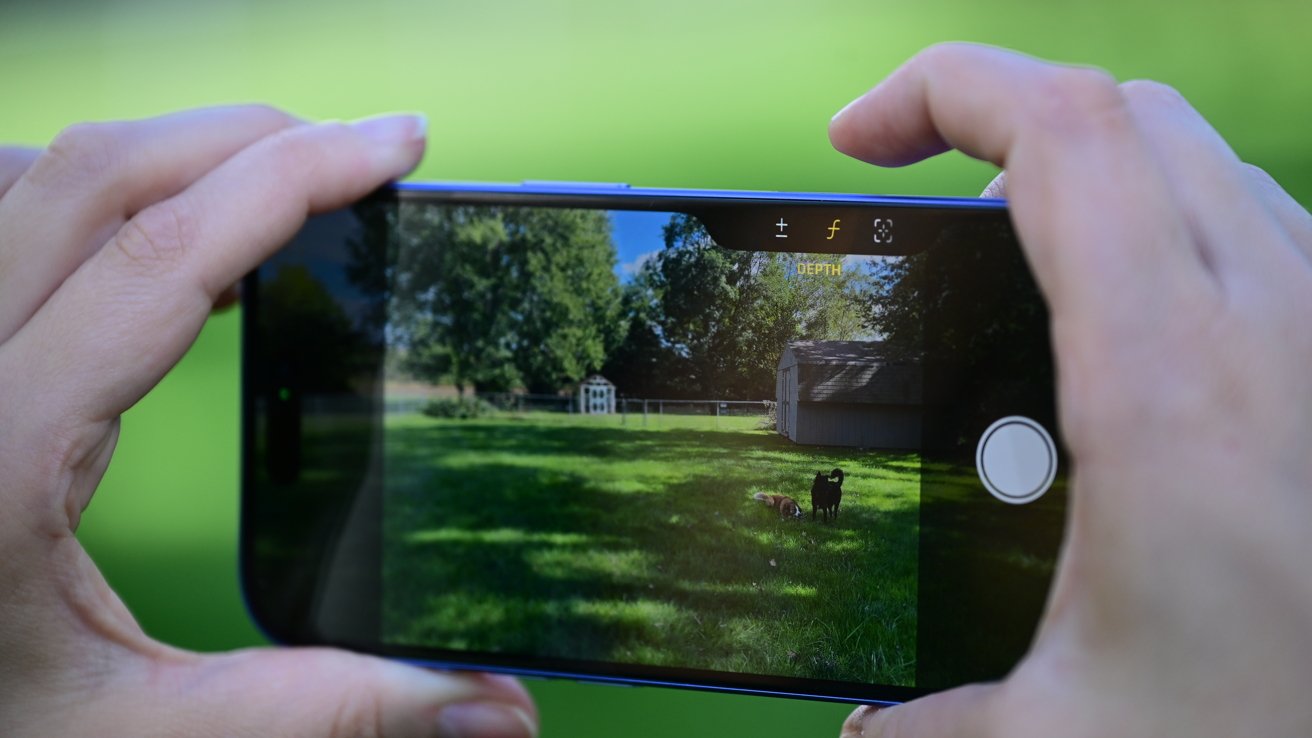
iPhone 16 & iPhone 16 Plus review: Taking a photo with the Camera Control button
Other times though, it’s incredibly fast. On the smaller iPhone 16, we basically just squeeze the phone to jump into the camera. Using it, and leveraging that speed, we’ve captured a lot of photos with a toddler one-handed that would be otherwise a lot harder to get.
In the end, it’s probably a bit of a learning curve on how best to utilize the button but at a minimum, it’s been more useful getting into the cameras, especially if you’re already in an app on your phone.
We could chalk up the addition of the button to Apple just trying something new with mixed results, but the answer is probably more about what’s yet to come.
Visual Intelligence is coming soon to Camera Control
With iPhone 16, Apple has a new feature that, so far, hasn’t been released called Visual Intelligence.
To use it, you will just hold down the Camera Control button to open the new interface, analyze what you’re looking at, and use AI to provide some sort of result.
This could be adding a concert poster to your calendar schedule, looking up the breed of a dog, or looking up where you can buy a sweater.
Apple is so bullish on Apple Intelligence and AI that it has invested an untold amount of money into bringing it to multiple devices as fast as possible.
It’s not just coming to all four of the iPhone 16 models, but is reportedly in the works for the new low-cost iPad and the 2025 iPhone SE too. Let alone it rumored smart home accessory.
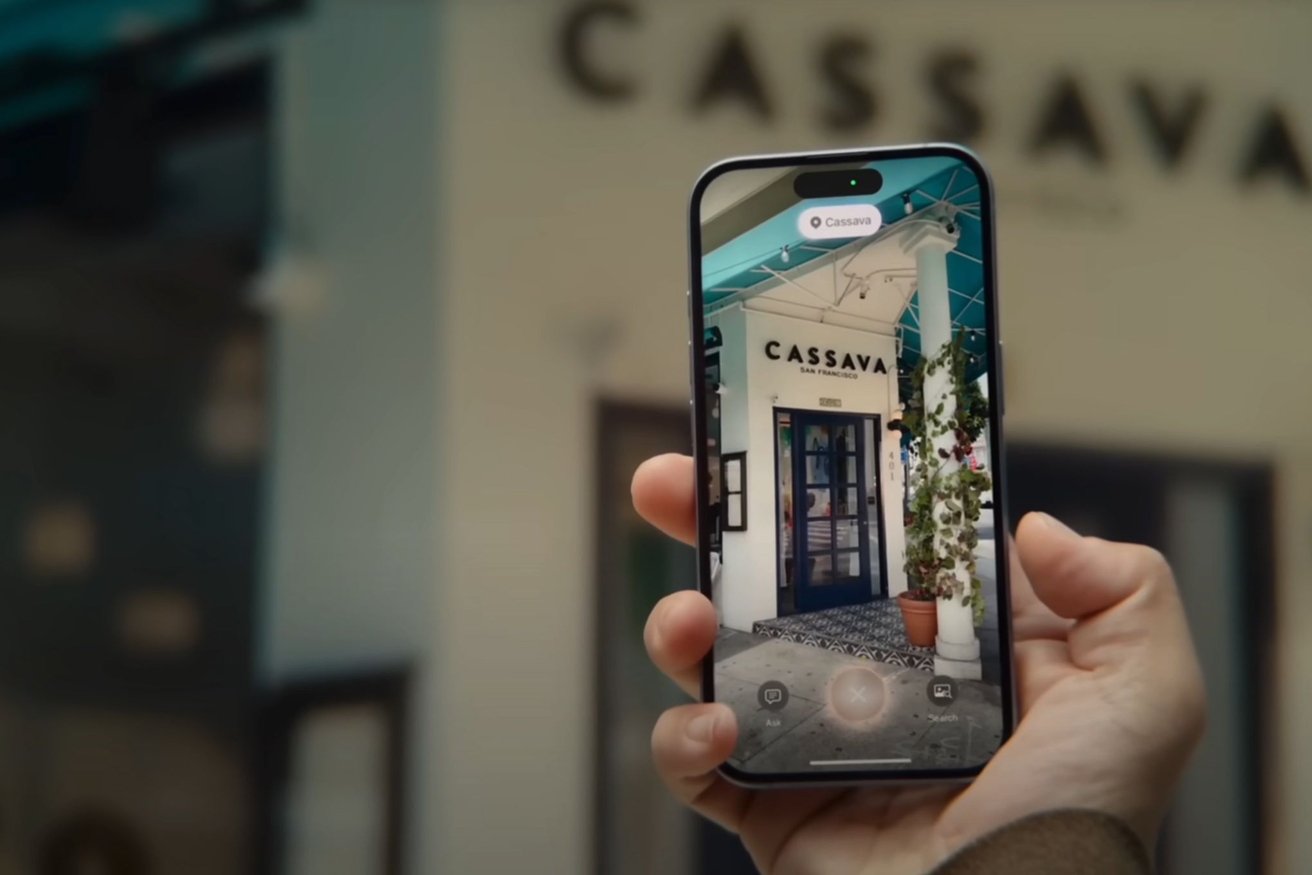
Use Visual Intelligence and the Camera Control button to get hours of a restaurant Source: Apple
Visual Intelligence, Apple’s answer to Google Lens, needed a physical button to launch quickly. It couldn’t do it with the Action Button as it already had use cases, so a new button is where we wound up.
It also gets to pull double-duty as the Camera Control button, providing some improvements to the photo-capturing app and third party ones too.
We’ve been using the Camera Control button an increasing amount of the past couple weeks and with Visual Intelligence, it will probably increase even more.
iPhone 16 review: Performance and Apple Intelligence
Powering up the 2024 iPhones is Apple’s A18 chip. Recent scans show that Apple created a whole new chip here and didn’t just use a binned version of the more powerful A18 Pro.
It’s still a six-core CPU with four high efficiency cores and two high performance cores. Compared to the last-gen A16, the A18 is a huge improvement.
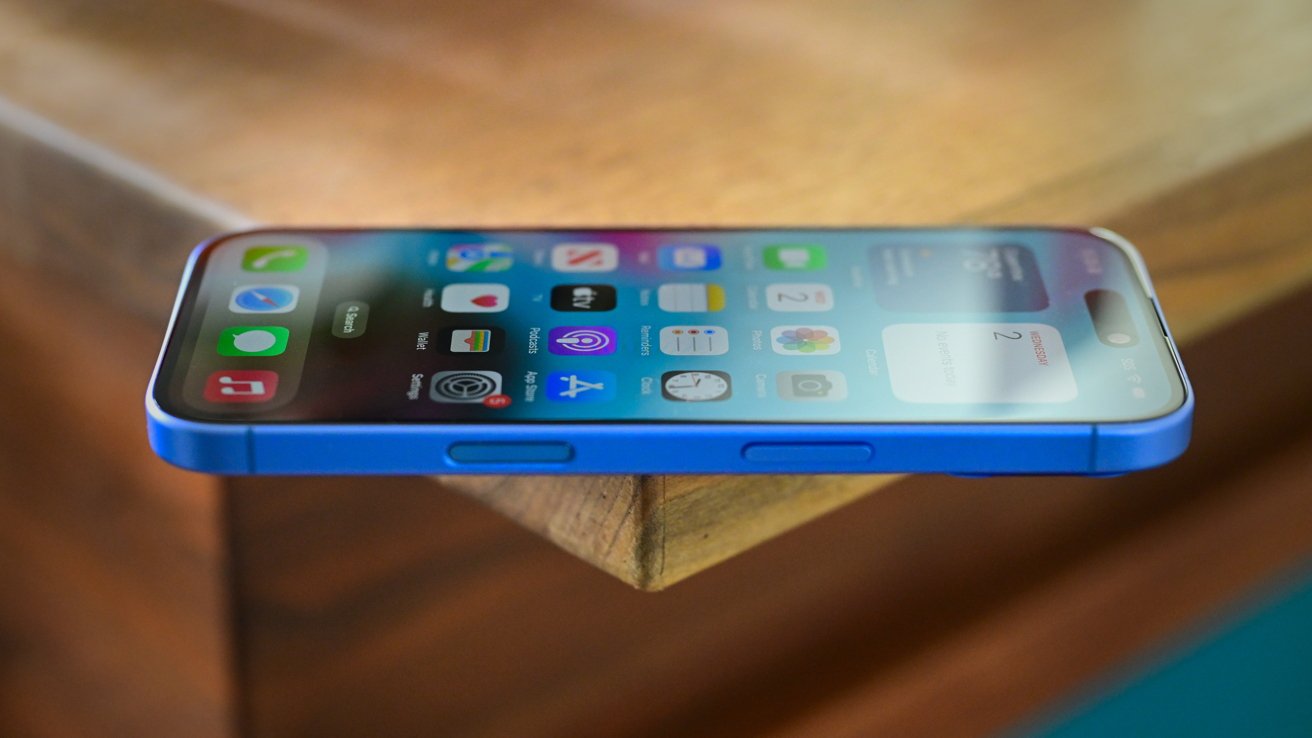
iPhone 16 & iPhone 16 Plus review: The new iPhone 16 is a big upgrade this year, especially from older models
In Geekbench 6, we saw the single-core improve from a 2646 to 3306. The multi-core went from a 6677 to a 8009.
That’s more than a 25% boost on the single-core score which is what is important for most tasks, like opening apps and navigating your phone.
We noticed now slow downs at all while using the phone and most mobile games were quick to load and render. Trying to edit a long 4K video did slow things down a bit, but that was the biggest bottleneck we ran into.
Not only is the A18 more powerful, but it’s the brains necessary for Apple Intelligence.
We wish we could give you a detailed, balanced review of Apple’s AI features but that’s not happening right now. None of the features are publicly released and even the betas are missing many of the promised ones.
In the beta, you get the updated Siri UI with improved understanding, Clean Up in the Photos app, summarization of notifications and emails, and more.
Other features, such as Genmoji and ChatGPT, will arrive in iOS 18.2 later this year. Then still more, such as Visual Intelligence and the more personal Siri, will land sometime in early 2025.
We’ve been testing the beta and like what we’ve seen, but it feels too early to say how useful things are. Apple is taking a much more cautious approach to AI, focusing on privacy, and we think that’s the best way to go about it.
iPhone 16 review: Power, Battery, and Connectivity
Like almost all of Apple’s current devices, not counting those pesky Mac accessories, they are powered up over USB-C. Apple says you get a 50% charge in only 30 minutes, or 35 minutes for the iPhone 16 Plus with up to 45W of wired power.
If you prefer a wireless, iPhone 16 supports 7.5W Qi, 15W Qi2, and now up to 25W via MagSafe. The catch is you need to use Apple’s new MagSafe puck and a 30W power adapter to get those speeds.
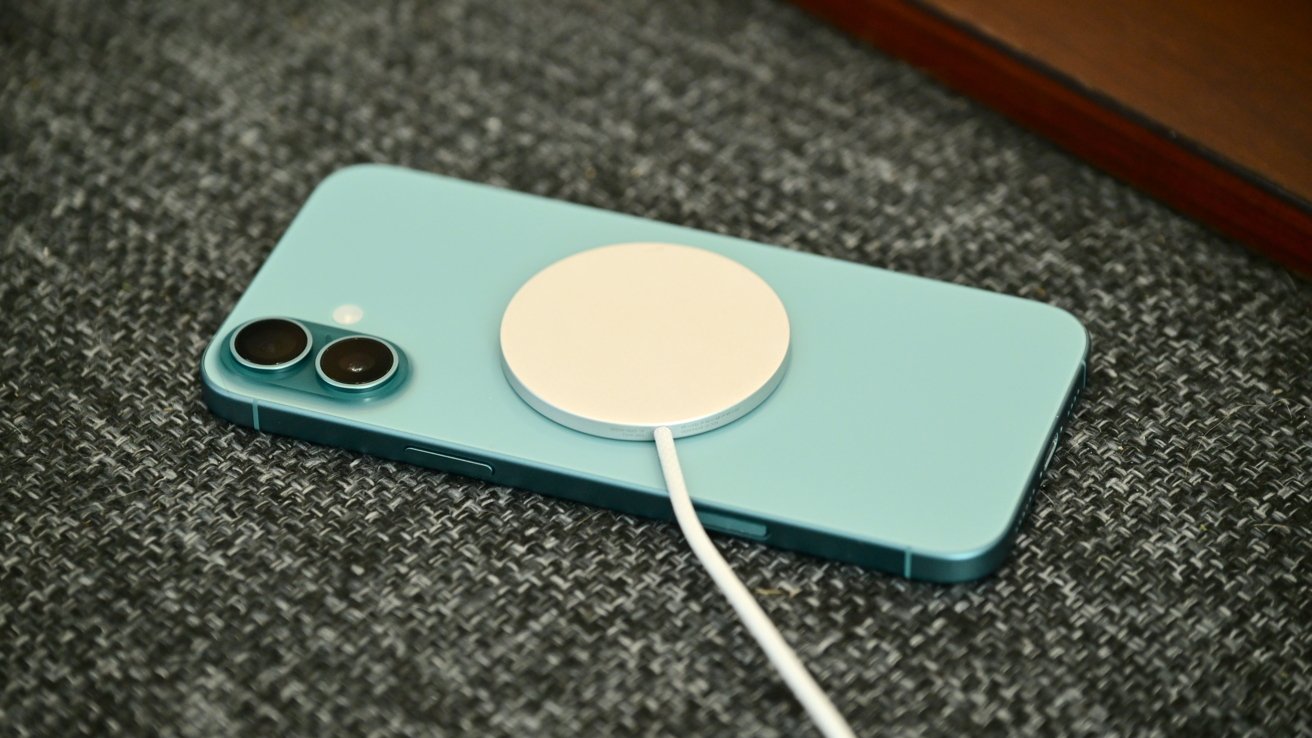
iPhone 16 & iPhone 16 Plus review: iPhone 16 now supports 25W MagSafe charging
One of the benefits of the iPhone 16 Plus, other than the screen size, is better battery life. Compared to iPhone 15, the iPhone 16 has increased from 20 hours to 22 hours and the “plus” model achieves 27 in Apple’s test.
Our testing bears this out. We’ve been able to make it through the day without much issue.
Battery life will always be very dependent on use case and anytime we get a new phone, we find ourselves using it a lot more than we typically would. Not to mention the additional background tasks that are running after setup.
The phones also now have Wi-Fi 7, Bluetooth 5.3, an ultra wideband chip, and Thread.
Thread comes from the iPhone 15 Pro line and allows direct control of supported accessories. Things like smart bulbs, door locks, shades, and the ilk without the need for a Thread border router.
With iOS 18, Thread support improved so it makes sense to see even in these entry-level devices.
We’re overjoyed Apple added Wi-Fi 7 as we assumed it would be a pro-only feature. Luckily it’s here and will help future proof these phones and deliver faster speeds in homes that already have Wi-Fi 7 routers.
So far, though, they’re few and far between — and very expensive. This is a future-proofing feature more than it is for 2024 and 2025.
iPhone 16 review: Should you buy the iPhone 16 or iPhone 16 Plus?
Frankly, Apple crushed it with the iPhone 16 and iPhone 16 Plus this year. Many of the big software features like Photographic Styles, audio mix, or Apple Intelligence aren’t locked behind a higher price tag.
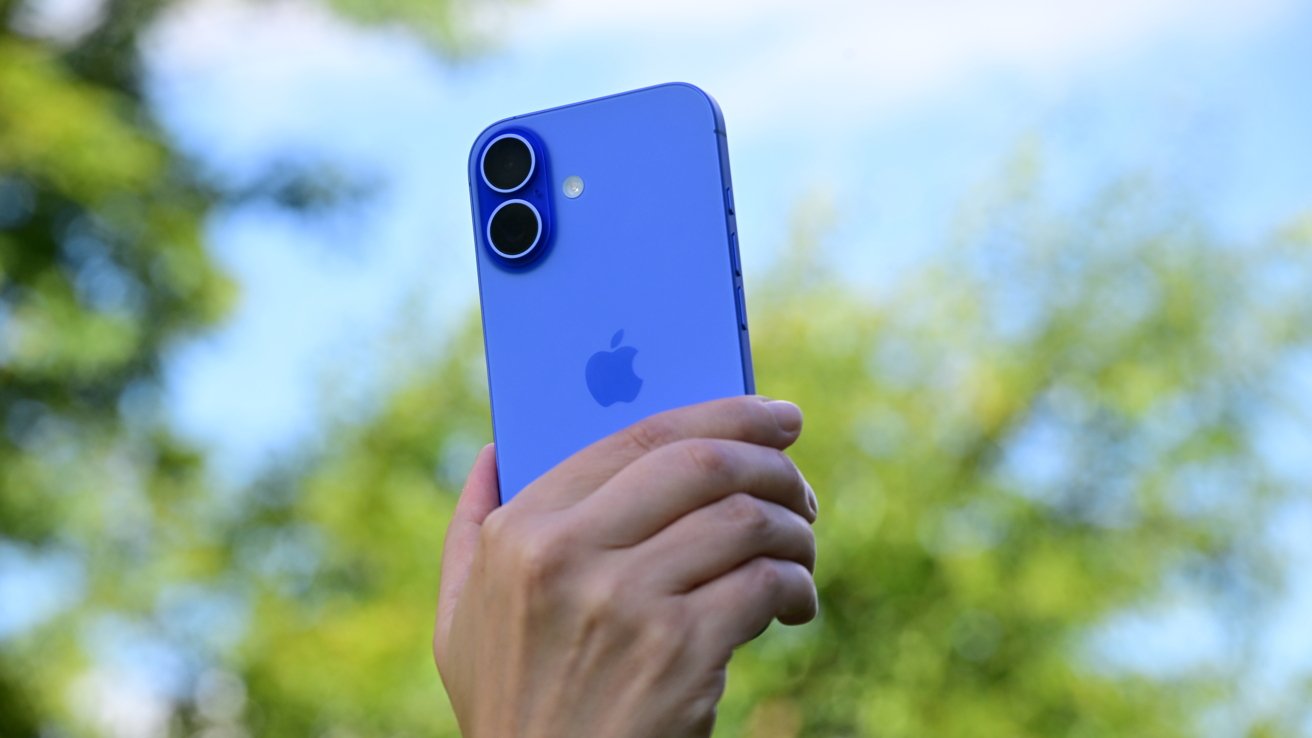
iPhone 16 & iPhone 16 Plus review: Holding the new iPhone 16
Same with the latest hardware features like Thread, Wi-Fi 7, Camera Control button, and the Action button. We even got a new A18 chip.
With the pro models, you are paying for the extra power of the A18 Pro, pro-level camera features like ProRes, a 5X telephoto lens, 120Hz ProMotion displays, and maybe faster USB speeds.
It isn’t a bad bargain for the price delta but it also makes the base iPhone 16 a better value. Most people don’t need those features and can be just as happy with the latest and greatest in an entry-level model.
We most often recommend the base iPhones for average users but this year, people who were going to the pros will be comfortable skipping out and saving some money. That money can be better spent on something like increased storage.
There’s still understandable disdain that Apple is pushing its AI features so heavily while not shipping these devices with them, but it will come in time. Until then, these are still incredible devices that have more future potential than ever.
iPhone 16 review: Pros
- More upgrades than usual compared to the pros
- Apple Intelligence shows promise in early betas
- A18 is a sizable boost in performance over iPhone 15
- Great battery life on iPhone 16 and especially on iPhone 16 Plus
- Colors are much more vibrant
- Lots of camera improvements even with the same sensors
- Faster charging speeds are welcomed
iPhone 16 review: Cons
- No Apple Intelligence features at launch
- Camera Control button can be fickle
- No new camera sensors
iPhone 16 & iPhone 16 Plus rating: 4.5 out of 5
Where to buy Apple’s iPhone 16 & iPhone 16 Plus
Wireless carriers are offering incentives on both the iPhone 16 and iPhone 16 Plus via trade-in deals and bill credits. At press time, the offers can equate to getting the device for free*. You can jump straight to the promotions below or head over to our iPhone Price Guide for easy side-by-side comparison of the offers.



